Tuesday, December 9, 2014
Today we visited some sites that done in 2013 so we had a chance to see the care of the sites as well as general maintenance.
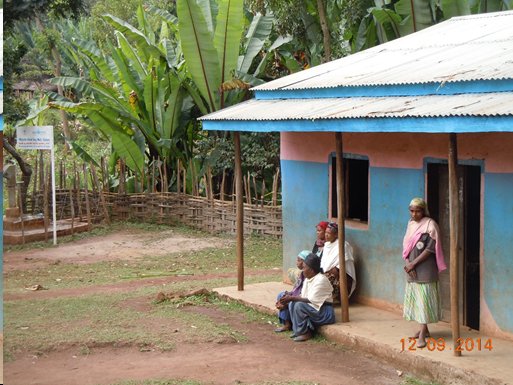
Kafale Dangiso, pictured standing in the doorway donated her land for the well site in the left corner. Even though hundreds of people come the well every day she said she was pleased to help.
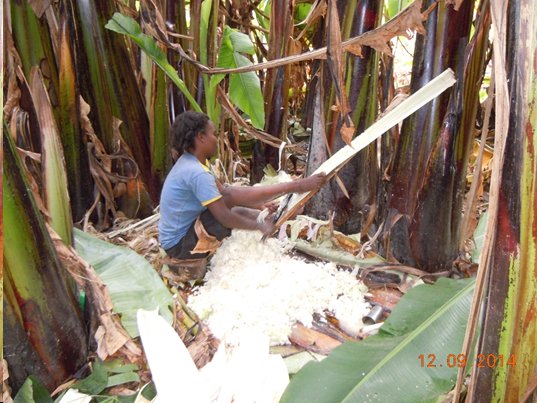
This young lady is scrapping the pulp off of the inset plant (false banana) that I mentioned in yesterday’s blog. This is so different and unusual that I will take the story on a bit. Note how she uses her foot to hold the plant in place as she pulls a sharp blade with both hands.
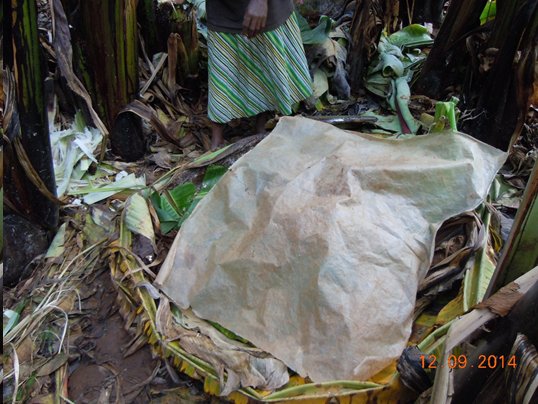
Now the pulp is in a fermenting stage and from odorless to pungent. Fermentation takes about 15 days. It is then stored for later use in a variety of uses mentioned yesterday.
As we approached this terrible source of water filled with who knows what in it – one child was drinking the water. Of course it is hard to see and to think of our blessings. They are in mud about 4 inches deep. In a word – no one should have this water source for drinking!
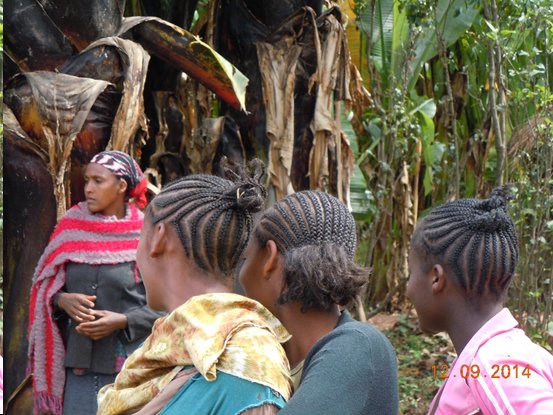
Odds are these young ladies do each other’s hair.
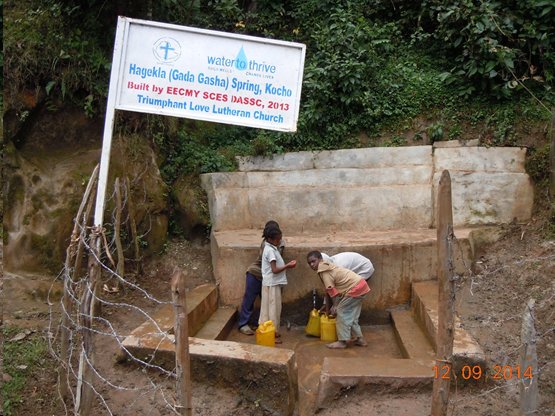
Yes, this spring protection system has some very special significance. Funded by member or our home congregation. The water flow is strong so it is constant run vs with a reservoir. It was a hike down a slippery hill. I was wearing hiking boots and had help cleaning them before getting into our vehicle.
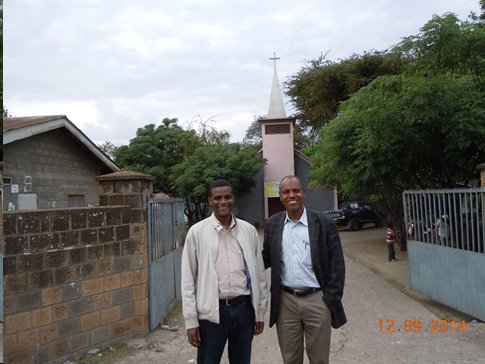
The picture setting is in front of the headquarters of the Ethiopian Evangelical Church of Mekane Yesus. Left is Tessama Herbaye of DASSC (our host and the person in charge of the projects in Hawassa area) and Rev. Bishop Hailu and Rev. Bishop Hailu Yohannes, of South Central Synod. This was a bit of uniting as I had met Tesamma in 2010 and Water to Thrive hosted Bp Hailu in Austin in June.
We finished our day with a meal and discussing our partnership including aspects of their training, their ability to expand their work and the future. Had a taste of the pancake (made from the inset plant – so I have done it all with this plant – saw many, saw harvest process, the fermenting and one prepared food).
Tomorrow is a travel day.
-Ed Scharlau
Tuesday, December 9, 2014
Today we visited some sites that done in 2013 so we had a chance to see the care of the sites as well as general maintenance.

Kafale Dangiso, pictured standing in the doorway donated her land for the well site in the left corner. Even though hundreds of people come the well every day she said she was pleased to help.

This young lady is scrapping the pulp off of the inset plant (false banana) that I mentioned in yesterday’s blog. This is so different and unusual that I will take the story on a bit. Note how she uses her foot to hold the plant in place as she pulls a sharp blade with both hands.

Now the pulp is in a fermenting stage and from odorless to pungent. Fermentation takes about 15 days. It is then stored for later use in a variety of uses mentioned yesterday.
As we approached this terrible source of water filled with who knows what in it – one child was drinking the water. Of course it is hard to see and to think of our blessings. They are in mud about 4 inches deep. In a word – no one should have this water source for drinking!

Odds are these young ladies do each other’s hair.

Yes, this spring protection system has some very special significance. Funded by member or our home congregation. The water flow is strong so it is constant run vs with a reservoir. It was a hike down a slippery hill. I was wearing hiking boots and had help cleaning them before getting into our vehicle.

The picture setting is in front of the headquarters of the Ethiopian Evangelical Church of Mekane Yesus. Left is Tessama Herbaye of DASSC (our host and the person in charge of the projects in Hawassa area) and Rev. Bishop Hailu and Rev. Bishop Hailu Yohannes, of South Central Synod. This was a bit of uniting as I had met Tesamma in 2010 and Water to Thrive hosted Bp Hailu in Austin in June.
We finished our day with a meal and discussing our partnership including aspects of their training, their ability to expand their work and the future. Had a taste of the pancake (made from the inset plant – so I have done it all with this plant – saw many, saw harvest process, the fermenting and one prepared food).
Tomorrow is a travel day.
-Ed Scharlau

About The Author: Water to Thrive
More posts by Water to Thrive